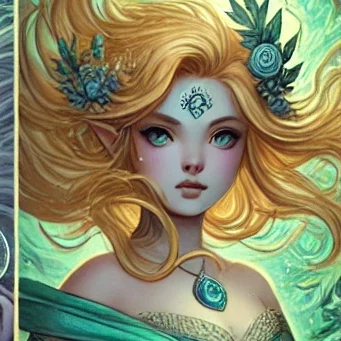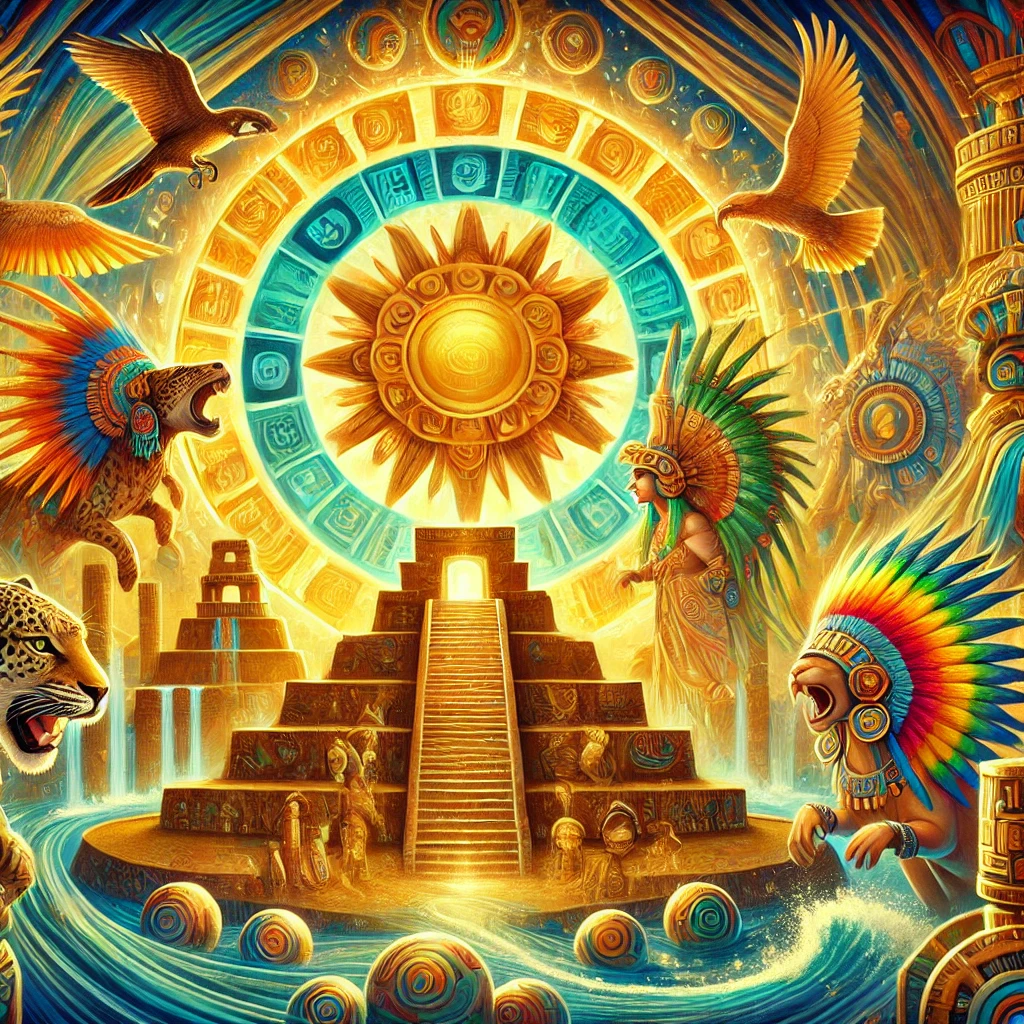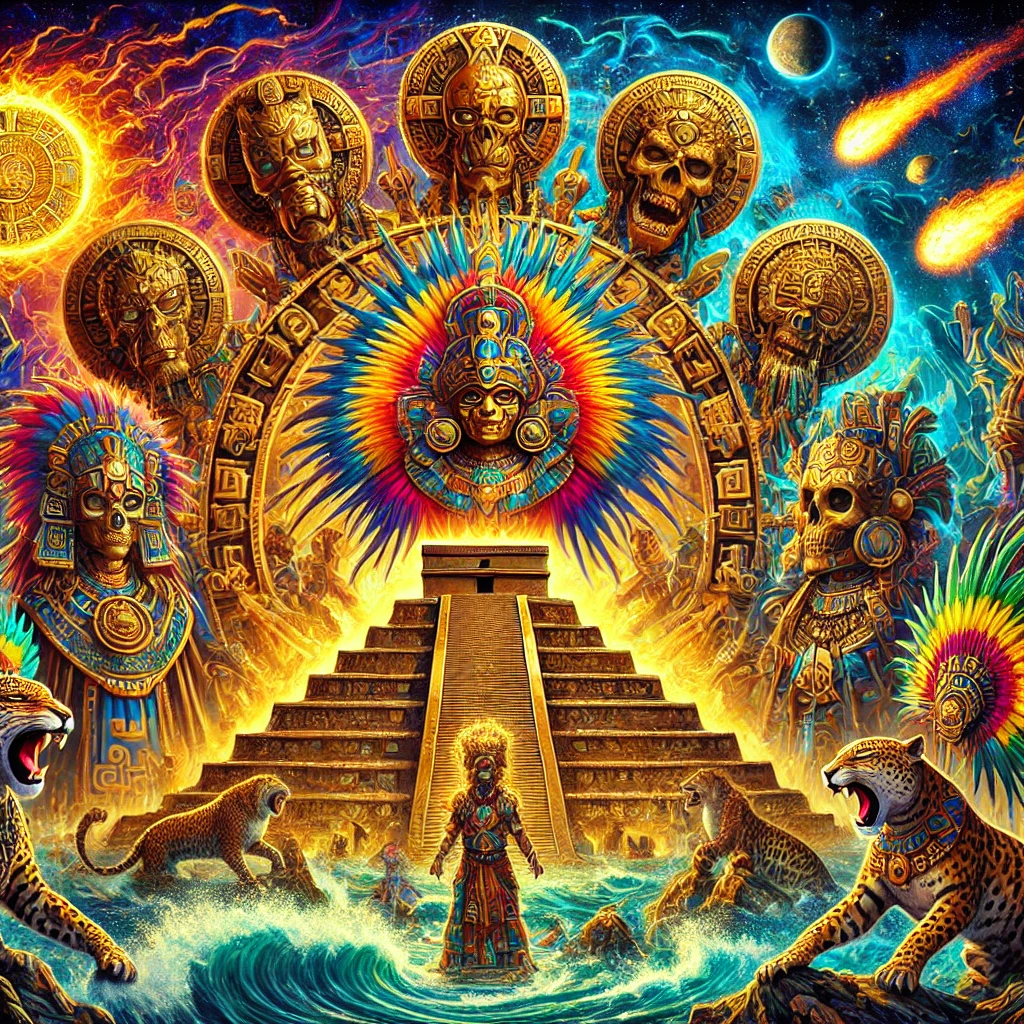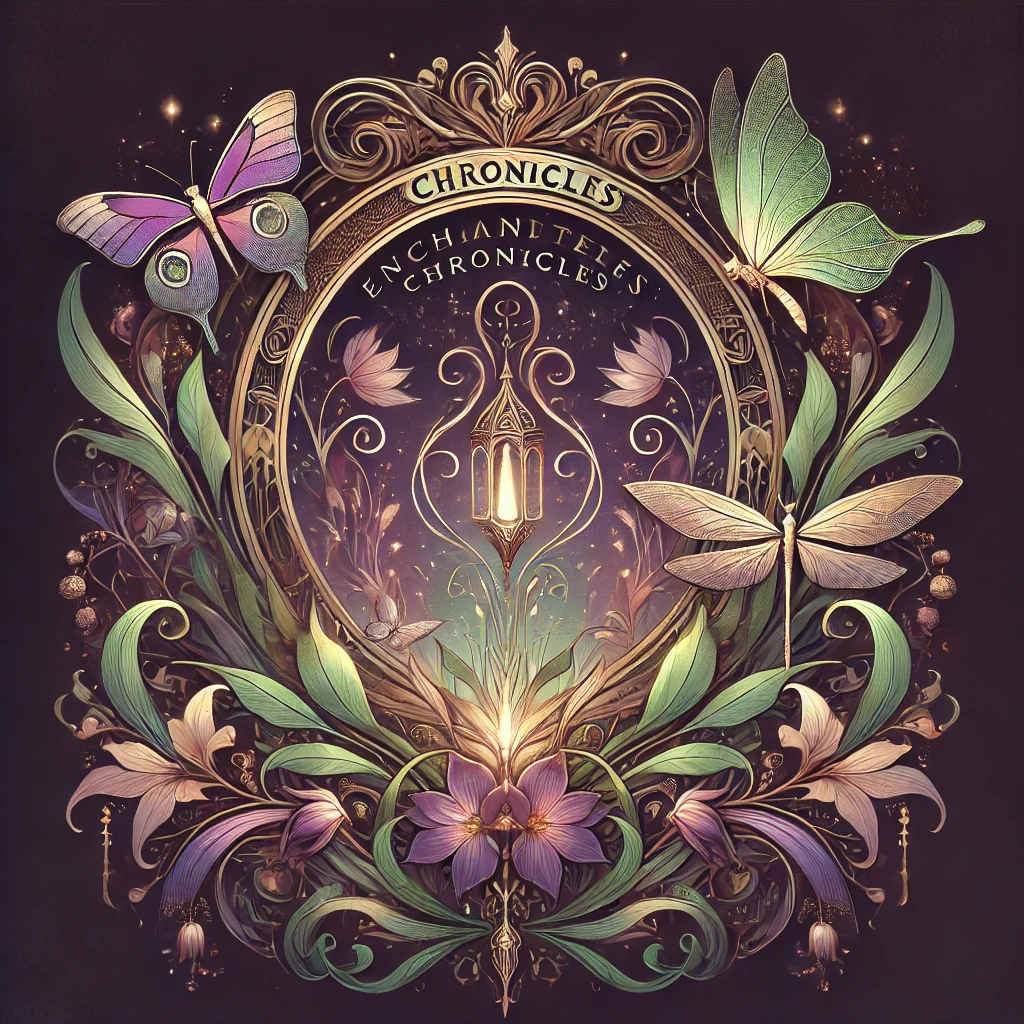The Fifth Sun: The Aztec Creation Myth and the Cycles of the Universe
Step into the mystical world of the Aztecs and uncover the legend of the Five Suns, a breathtaking story of creation, destruction, and cosmic cycles. According to this ancient prophecy, we are living under the Fifth Sun, an era sustained by divine sacrifice and destined to end in catastrophe.
From the towering temples of Tenochtitlán to the intricate Aztec calendar system, this creation myth shaped an entire civilization. How did the Aztecs interpret the forces of nature, and how does this legend still influence Mexican culture today?

By : Nissa Moonstar

Unlock the Secrets of the Aztec Fifth Sun – A Myth of Creation and Destiny
The Cosmic Vision of the Aztecs
The Aztec civilization, one of the most powerful and sophisticated cultures of pre-Columbian Mesoamerica, held a unique vision of the universe. At the heart of their worldview was the belief in cosmic cycles, where the world had been created and destroyed multiple times before the present era. According to Aztec mythology, we are currently living in the time of the Fifth Sun—a fragile age destined to end in cataclysm like those before it.
This legend of the Five Suns provides not only a fascinating glimpse into the Aztec perception of time and destiny but also highlights their deep connection to the divinities and natural forces governing the cosmos. By exploring this creation myth, we uncover the rich cultural and spiritual heritage of the Aztecs and see how its echoes persist in modern Mexico and beyond.
The Myth of the Five Suns: Creation and Destruction
The Aztec cosmogony describes four previous worlds, each ruled by a different sun (or era), destroyed by a specific catastrophe before giving rise to the next. These cycles represent the impermanence of existence and the perpetual struggle between the divinities.
1. The First Sun – Nahui-Ocelotl (Jaguar Sun)
The first world was created by Tezcatlipoca, the powerful divinity of night and sorcery. However, the people of this era were devoured by enormous jaguars when Quetzalcoatl, the Feathered Serpent, overthrew Tezcatlipoca in a divine battle. With the destruction of its people, this sun came to an end.
2. The Second Sun – Nahui-Ehécatl (Wind Sun)
The second world was ruled by Quetzalcoatl, but the wrath of Tezcatlipoca brought powerful hurricanes that destroyed everything. The humans of this age were transformed into monkeys and scattered into the forests.
3. The Third Sun – Nahui-Quiahuitl (Rain Sun)
The third world belonged to Tlaloc, the divinity of rain and water. However, the destruction of this sun came in the form of a fiery storm—raining down burning stones and flames, reducing the land to ashes. The surviving people were transformed into birds.
4. The Fourth Sun – Nahui-Atl (Water Sun)
The fourth age was presided over by Chalchiuhtlicue, the divinity of rivers and lakes. This world ended in a great flood, drowning its inhabitants, who were then turned into fish. This cataclysm marked the end of the previous cycle, making way for our current era.
5. The Fifth Sun – Nahui-Ollin (Earthquake Sun)
The present world, the Fifth Sun, was created through a divine sacrifice at Teotihuacán. When no divinity volunteered to become the new sun, Nanahuatzin, a humble and sickly deity, threw himself into the sacred fire, transforming into the brilliant Sun. However, the sun remained motionless in the sky until the other divinities sacrificed themselves to give it movement. This sun is believed to be sustained by continuous offerings and blood sacrifices. According to the prophecy, it will ultimately end in earthquakes, marking the conclusion of this cosmic cycle.
The Cultural and Historical Context of the Myth – Sacrifice and the Maintenance of the Fifth Sun
The Aztecs believed that maintaining the Fifth Sun required ongoing sacrifices to feed the sun’s energy and prevent the end of the world. This belief was the foundation of their ritual system, leading to the famous human sacrifices that took place at Tenochtitlán’s great temple. The idea was that without these offerings, the divinities would withdraw their support, plunging the world into darkness and destruction.
Astronomy and the Aztec Calendar
The legend of the Five Suns is closely tied to the Aztec calendar system, which consists of the 260-day ritual calendar (Tonalpohualli) and the 365-day solar calendar (Xiuhpohualli). Every 52 years, these two calendars aligned, creating a moment of cosmic uncertainty. The Aztecs feared that if they failed to appease the divinities, the Fifth Sun would come to an abrupt end during this period.
The Evolution of the Fifth Sun Myth Over Time – Spanish Conquest and the Suppression of the Myth
With the arrival of the Spanish in 1519 and the fall of the Aztec Empire in 1521, the myth of the Fifth Sun took on a new meaning. Some indigenous groups saw the Spanish conquest as a fulfillment of the prophecy, marking the collapse of their world and the transition to a new cosmic era. The suppression of Aztec religious practices led to the blending of native beliefs with Catholic traditions, but the legend endured through oral tradition and historical accounts.
Modern-Day Influence and Cultural Legacy
Today, the myth of the Five Suns remains a cornerstone of Mexican identity and indigenous heritage. It has influenced art, literature, and even contemporary movements promoting the revival of pre-Hispanic knowledge. The imagery of the Fifth Sun is often depicted in murals, sculptures, and even Mexican national symbolism, such as the iconic Sun Stone (Piedra del Sol), which showcases the cycles of destruction and rebirth.
In popular culture, the myth appears in films, literature, and video games, sparking curiosity about the ancient Mesoamerican worldview. Modern scholars and enthusiasts continue to explore the significance of these legends, keeping them alive in new forms.
The Relevance of the Fifth Sun Today
The legend of the Five Suns is more than just an ancient myth—it is a testament to the Aztecs’ deep understanding of time, nature, and cosmic cycles. The belief in cyclical destruction and renewal continues to resonate in contemporary Mexican culture, serving as both a historical memory and a philosophical lesson about the impermanence of existence.
As we move forward in the modern world, the myth reminds us that every era is fleeting, shaped by the forces of change and transformation. Whether interpreted as an ancient prophecy or a poetic reflection on life’s fragility, the story of the Fifth Sun continues to inspire awe and wonder, ensuring that the legacy of the Aztecs endures across generations.

Choose another Realm…
Make a Wish on the Wishing Tree of Tara!
Click on the tree to tie a ribbon and make a wish.
Join our community of readers Subscribe To our newsletter!

Enchanted Chronicles: Ignite the Myths Within
Step into a world where ancient myths are no longer confined to books—they are part of your journey.
Sign up for free!
We won’t send you spam.
Unsubscribe at any time.
